I finally got some time to whip together a post on my testing for the forged cavity back shootout. Part 1 feature a focus on each irons design an aesthetics while part 2 here will talk about performance aspects of each iron. As I mentioned in part 1, organizing and actually doing this shootout was much more difficult logistically that I had imagined. Being able to organize all the demos within the same window proved to be impossible from all the different manufacturers. I’m going to have to re-think the way I do shootout style testing by either going with smaller groups and numbers of clubs or stick to one by one reviews and one on one comparisons.
 Due to the excruciatingly long time it’s taken to get this test done (I know people have waited and I am sorry taking so long!) I’ve decided to throw some models I’ve received in the past few weeks into this performance test along with the first batch of irons rather than doing a second test that will also most likely take too long to do. Many of these irons deserve their own individual reviews as well which I will do down the road but for now, their performance aspects will be presented here. These irons include the TM Burner Forged, R9 Forged, Titleist VG3Forged, Royal Collection Tour VS Forged, Tourstage X-Blade GR Forged and the PRGR egg Forged (which I actually already reviewed here).
Due to the excruciatingly long time it’s taken to get this test done (I know people have waited and I am sorry taking so long!) I’ve decided to throw some models I’ve received in the past few weeks into this performance test along with the first batch of irons rather than doing a second test that will also most likely take too long to do. Many of these irons deserve their own individual reviews as well which I will do down the road but for now, their performance aspects will be presented here. These irons include the TM Burner Forged, R9 Forged, Titleist VG3Forged, Royal Collection Tour VS Forged, Tourstage X-Blade GR Forged and the PRGR egg Forged (which I actually already reviewed here).
When it comes to testing irons, general opinions and views can be made on each irons design and looks as well as performance. It certainly can be hard giving accurate feedback on an iron I sometimes only get to test for a few days. As we all know, sometimes switching to a new iron can take several sessions just to get used to. I try and test irons for several days straight when I have them otherwise its just not enough time to make a fair assessment. I spend at least a day staring at each iron and taking photos. I examine the irons design based on the manufacturers listed features and specs (if you read all the specs and product descriptions in the pro shop, I actually write all of those, translating from Japanese which is how I learn about all the products). I then spend at least a day at the range hitting the iron(s) off the tee and off the mats. Personally I don’t like driving ranges.  If you want to work on your swing that’s all fine but I feel hitting a nice forged iron on hard practice mat (there are rarely any grass ranges in Japan, at least for the public) is not nearly the same as hitting it on a lush fairway. However, range sessions are a must, all I have to do is pay for balls and I can stay there all day.
If you want to work on your swing that’s all fine but I feel hitting a nice forged iron on hard practice mat (there are rarely any grass ranges in Japan, at least for the public) is not nearly the same as hitting it on a lush fairway. However, range sessions are a must, all I have to do is pay for balls and I can stay there all day.
Living on a golf course also makes it convenient for me to bring lots of test clubs right on the course to test out which I usually do the day after the range. This is my favorite kind of testing, real world testing. Here you can see how different head and sole designs really work. Uneven lies, rough, lush fairway, hitting off the tee into the wind, real hazards like trees and bunkers and water. The club attendants and staff sometimes think I’m weird heading out on the course with 5 different 7 irons.
While I am obviously not a professional golfer, I am an enthusiast like all of you. I represent the average consumer who wants the best cutting edge clubs. Every year I am lucky enough to hit almost every club released by all the big manufacturers so I hope that has given me some sort of measure to properly evaluate many of today’s designs and clubs. However in the end, when I think about it, evaluating certain aspects of golf clubs is very very subjective. These are my opinions and my findings that may differ from the next player.  Measurements like feel and forgiveness are very hard to quantify and will vary from person to person. What feels soft to one player may not for the next. Some players believe that to a certain extent even forgiveness in a club is based on the players mindset and of course skill level. A club that is considered as forgiving by a skilled and confident low handicapper can very likely be not forgiving for a once a month average golfer.
Measurements like feel and forgiveness are very hard to quantify and will vary from person to person. What feels soft to one player may not for the next. Some players believe that to a certain extent even forgiveness in a club is based on the players mindset and of course skill level. A club that is considered as forgiving by a skilled and confident low handicapper can very likely be not forgiving for a once a month average golfer.
In the end these are my findings and my subjective opinion. I hope people can use this as a reference for deciding about a certain iron but keep in mind there is no clear winner. Every player is different. We all have different swings and different levels. It’s all about finding the right set of irons that suits your game and play and personal taste. All the irons I have tested are of very good quality and performance. Are some better than the other? For me yes, which is why at the end of the test I’ll let you know what my personal favorites are (which I actually bought already). I’ve broken up the ratings as follows along with written feedback on each iron:
 FEEL: This is of course feel at impact. Many factors affect feel. People always talk about who forged that iron, what material is it made of etc etc… however where it is forged and what material it is is really only one factor on how an iron will feel. The actual design of the club head as well as the grind will also affect a clubs feel. The right shaft also affects feel of a club. All the irons here are forged and feel pretty good. Some are more firm and some are more soft. This rating is very subjective but I’ll try my best to convey what I feel. Each individual will have their own perception of soft and what they like. I know some players who prefer a more “firm” soft with feedback rather than a “mushy” soft.
FEEL: This is of course feel at impact. Many factors affect feel. People always talk about who forged that iron, what material is it made of etc etc… however where it is forged and what material it is is really only one factor on how an iron will feel. The actual design of the club head as well as the grind will also affect a clubs feel. The right shaft also affects feel of a club. All the irons here are forged and feel pretty good. Some are more firm and some are more soft. This rating is very subjective but I’ll try my best to convey what I feel. Each individual will have their own perception of soft and what they like. I know some players who prefer a more “firm” soft with feedback rather than a “mushy” soft.
TRAJECTORY: Irons today feature many designs and technical features that push the center of gravity lower and lower in heads. However all irons have different CG positions which will affect the actual trajectory of the ball. Besides rating the trajectory as high mid or low, I’ll try my best in the description to describe the actual ball flight.
SPIN: This is a very difficult rating for me. I work out of my house so I don’t have a launch monitor or any high tech gear to measure spin. I have to go by eye and base my rating on the irons performance ie what it does when it lands. This is probably why you see the smallest variance between all the irons in the spin category. That coupled with the fact that most of the irons feature new grooves while a few feature old grooves make it unfair when comparing the spin as the older models will out spin the new ones. That said, many average golfer models are based on distance performance which actually produce less spin on purpose for more carry and total distance.
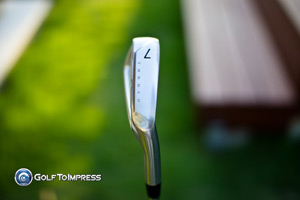 DISTANCE: Distance is one of the quantitative measures I can actually give, either using flags at the driving range or GPS at Kiminomori GC. Distance is effected by trajectory and spin created by each design in each iron and of course ultimately by the loft of each iron. The tested irons are all 7 irons however, they range from 28.5* to 34* so there will obviously be a difference in distance. So keep this in mind when looking at the distance rating. An iron with more distance does not necessarily mean its a better iron unless you are a player specifically looking for a distance iron. Then you’re more likely to choose the strong lofted model over the weak lofts.
DISTANCE: Distance is one of the quantitative measures I can actually give, either using flags at the driving range or GPS at Kiminomori GC. Distance is effected by trajectory and spin created by each design in each iron and of course ultimately by the loft of each iron. The tested irons are all 7 irons however, they range from 28.5* to 34* so there will obviously be a difference in distance. So keep this in mind when looking at the distance rating. An iron with more distance does not necessarily mean its a better iron unless you are a player specifically looking for a distance iron. Then you’re more likely to choose the strong lofted model over the weak lofts.
FORGIVENESS: As an average golfer I feel I can judge how forgiving an iron is based on its design and ability to minimize distance lost on off center hits because I do in fact have off center hits. My forgiveness rating is not only based on minimal distance loss but how easy a club is to hit in different lies including uneven lies and thick rough as well as the design of the club ie lots of leading and trailing edge forgiveness, a pocket cavity, a wider sole etc. Again many features can affect forgiveness.
TARGET PLAYER: The target player rating is really a handicap range where I think those players could have no problems playing each specific iron with success. Some irons are aimed at better players while some are aimed at more improving players. Its also true that a mid to higher handicap player or someone who shoots in the 90’s could play an iron aimed at the 15 capper if he or she is a great ball striker. Typically, the larger the head, the more offset it has, and the more distance it gives gears the iron towards the mid to higher handicapper. In this case I made the range 0 – 20 as typically that is what a forged CB targets.
In my descriptions I will also classify each iron as manual or automatic. Manual meaning workability left and right with a certain level of control. Automatic meaning point at the target and swing for a straight and high shot.
Okay let’s get started with the ratings. Click Read More to continue with the irons!
NIKE 2010 MACHSPEED FORGED…
First up we’ve got the Nike Machspeed Forged iron. This advanced 2 piece cavity features a soft S20C forged body and a laser welded SUP10 asroll face. As we know most manufacturers don’t publicly announce where their irons are forged/manufactured but as I noted in my Machspeed Forged review a few months ago, this head shouts out Endo. It’s made in Thailand where Endo has a forging plant and the design is very much Endo like with a laser welded asroll face to a forged body. I also take into consideration Nike and Endo’s prior relationships and the fact this is Nike’s most expensive mainstream iron (Endo produced irons typically hold a higher premium).
While the design and looks are hit and miss with many, cavity logos and colors aside, the Machspeed Forged is a great looking head shape wise. It is very balanced with great lines and the neck flows into the head very smoothly. It has a nice sharp toe and a rather thin top line. All these adds up to a very nice looking setup at address.
This iron is automatic, the pocket cavity and sole grind with trailing edge heel and toe relief make it pretty forgiving. Trajectory is on the higher side which results in good carry and distance. The spin is average which is pretty much what I say about most new irons with new grooves. Aim the Nike at the pin and swing away and expect it to go straight with a nice mid to high launch. The feel is of course affected by the pocket cavity. Pocket cavities are love and hate, people love them for their added forgiveness but some hate them for their supposed click at impact. This really depends on the player. I find newer designs today are able to suppress the clickiness of the face thanks to altering the pocket cavities depth and design. As you can see from my feel rating, feel is average because of the pocket and most likely the SUP10 asroll face.
The Nike’s pocket and automatic nature make this a great iron for the improving player and even 10 handicapper wanting an easy to play iron with some extra distance. I’d put its main focus audience around 15 and up with average golfers really appreciating this iron the most.
EPON 2010 AF-502 FORGED…
Next up we have the Epon Forged AF-502 cavity back. The AF-502 is another iron that uses a super soft S20C Endo forged body matched with a precision laser welded asroll super spring face… sounds familiar. Epon takes it a step further but creating a hollow body cavity and filling it with what they call an alpha gel made for shock absorption and anti vibration.
The Epon AF-502 is a great looking iron. Heck all Epon irons look top quality and scream design and performance. The AF-502 is by no means the smallest head nor is it the biggest. It probably sits somewhere in the middle probably leaning more towards mid sized than compact. This attibutes as well to its forgiveness, thanks to the hollow pocket cavity and leading edge relief the iron borders on automatic but is still reasonably workable for the better player who can command a draw and fade. The AF-502 is a well rounded iron, its not the longest, doesn’t launch the highest but it gets the job done.
One area of contention since the AF-502 has come out has been the feel. Vibration dampening types of technology are very hit and miss in irons. For some people it’s a great feature and helps suppress unwanted vibrations but for the very picky player who wants feedback, the AF-502 may feel as if it doesn’t give enough feedback. Miss hits can feel the same as pure strikes and I’ve gotten comments from some people that the iron lacks feel or is too muted. This kind of feel is very difficult to rate and judge. For me the feel was a little bit too muted.
As for an audience, performance wise and playability wise the AF-502 suits a very wide range of players. It’s forgiving enough for the double digit and improving player but also appealing to the single digit player who wants a more forgiving iron.
MIZUNO 2010 JPX AD FORGED…
Mizuno’s 2010 JPX AD Forged is a bit of a departure from the E500 and E600 which were pretty good forged irons for the average and improving golfer. The E500 and E600 was even embraced by those with handicaps between 10 – 15 who wanted to play a very good feeling and forgiving Mizuno forged iron (E500 was made by Endo I might add). The reason why I say its a bit of a departure is that the new JPX AD Forged suddenly became bigger in size, with a thicker top line and more chunky appearance at address. The CG is placed low with a tungsten weight sole which results in a higher launch and more distance.
The low CG, bigger head and sweet area coupled with a rounded sole make this iron rather forgiving. Feel is reasonably good and soft and the automatic JPX AD will be very attractive for those players 15 – 25 handicap wanting to play a forged iron. While I liked the feel and forgiveness of the iron, the chunkier size at address was something I didn’t like so much. However who can argue with an iron that goes high and straight with an easy swing.
HONMA 2010 BERES MG700 FORGED-F….
In the past Honma only saved a forged model for the pro line, the Beres 9 series. This year they announced the new 2010 MG700 Forged-F. What that model name means is yes, only the face is forged (by Endo) and the body is in fact SUS630. The MG700 is designed for the average golfer and it packs technology to make it perform in the forgiveness and distance categories. Loft is strong at 28.5* which makes it very good distance wise and the tungsten weights in the sole and pocket cavity make for forgiving high launch that carries for distance.
This iron is automatic and golfers who are into premium models will appreciate the workmanship and design as well as high grade carbon ARMRQ shaft which also contributes to the iron’s distance. I felt this was the firmest iron of the bunch feel wise. A lot probably has a lot do with it’s use of a stainless body and the iron’s pocket design. There is a more obvious click on impact with the MG700. However these design aspecs are what make this a very high MOI and forgiving iron. The MG700’s key point is not feel but performance and ease of use which will be very much appreciated by players 15-25 handicap.
YAMAHA 2010 INPRES X V FORGED…
In the last 3 years, Yamaha has done very well in the Japanese market with the V Forged line. The 2010 Inpres X V Forged is 1 piece forged cavity made from S20C steel at Endo. This is one of the best looking irons I’ve tested this year, the back cavity impressive looking and the head shape with sharper toe, thinner topline and sole with a bit of offset is very balanced. Even more balanced is the irons performance. It’s no coincidence that a 1 piece forged iron from S20C get’s very high ratings for feel. No pocket cavity, no extra tungsten forged into the head. The V Forged is very pure also thanks to the slightly higher CG position creating a thicker sweet spot for that buttery feel.
The most surprising thing about the V Forged? It’s distance and forgiveness. Because there is a more compact and harder to hit limited Tour Model of the V Forged, the standard V forged we have here was made just a bit more forgiving and with stronger lofts (25* 5 iron). The standard V Forged is played even by top Yamaha pro Toru Taniguchi on the JPGA tour. His reasoning for playing the iron is simple, awesome feel in a forgiving yet workable iron. The V Forged has really great leading and trailing edge relief but other than that doesn’t have any fancy pocket cavities or ultra low CG thanks to weighting. It’s almost hard to explain why its so forgiving. It is classified by most publications as a manual iron and meant for the under 10 handicapper but I truly believe this iron can be played by a 15 handicapper and even a good ball striker all the way up to a 20. Truly great feel and performance from a great looking iron.
PING 2010 ANSER FORGED…
One of the hottest releases of the year is the new 2010 Ping Anser Forged. The Anser Forged targets the low handicapper but in reality is somewhere between compact and mid sized and has been a popular choice of even the average golfer. It has one of my favorite finishes on an iron, that pearl milky satin that the burner forged also has. Appearance wise it’s a pretty good looking iron and very Ping like when it comes to head shape. To maintain a more traditional look ping does use a ferrule for the Anser Forged which gives the illusion of a longer neck compared to those Ping models with no ferrule. This allows the neck to flow into the head especially with the shorter irons where there is less offset. The long irons though seem to have more offset than most people would have preferred but this was Ping’s design at making the longer irons easier to hit.
The machined grooves do give a bit more bite than some of the irons here and the tungsten sole really help get the ball in the air with a nice and low CG placement. Distance is average which is fine as the Anser Forged’s main focus is not distance performance. When it comes to feel, once again we have an iron which utilizes some sort of sound control or vibration suppression technology via Ping’s CTP or custom tuning port. This along with Ping’s choice of a form forged 8620 carbon steel head has rendered many mixed opinions on the Anser’s feel. Yes it’s softer than pretty much most of Ping’s iron offerings but it doesn’t quite compare to the pure feel of a S20C forged CB in my opinion. Still the Anser Forged has good looks, is unmistakably Ping, nice forgiveness and overall performance and has custom fitting options that pretty much most other manufacturers CANNOT match.
A manual iron with hints of automatic performance, dubbed by Ping for the athlete and better golfer but easily played by the mid and improving golfer.
ONOFF 2009 PLUS FORGED…
ONOFF releases a new forged iron every 2 years so we have the 2009 ONOFF Plus Forged here. The ONOFF Plus forged is another iron I really like the looks of. It’s clean and simple design, matched with a thin top line and less offset make it a very eye pleasing iron to look at. Hit it and you’ll be even more pleased. This is the same iron Top Japanese Pro Shingo Katayama (one of the winningest ever on the Japanese Tour with 26 wins) plays and we all know Shingo is the biggest believer in forgiving golf clubs. He even plays his ONOFF Plus with graphite shafts.
The S25C forged ONOFF Plus has very pure feel. Like the V Forged there is a bit more meat behind the sweet spot thanks to the way the back cavity is designed. However the ONOFF launches higher and spins more thanks to non conforming grooves and a tungsten weighted sole. This is a manual iron targeting the single digit player but with enough forgiveness for the mid capper ie 10 – 15. This is not a distance iron nor is it meant to be. It’s for the player who wants great feel in a clean looking workable iron. We’re about a month away from the announcment of a new 2011 ONOFF Plus forged so this model has already ceased production. Those who own this iron are pretty lucky though I do look forward to how ONOFF plans to top this model.
TOURSTAGE 2010 X-BLADE 703 FORGED…
The Endo forged S20C Tourstage X-Blade 703 is probably the most players oriented cavity back in this test. It’s the most compact, has the least offset and the sharpest lines. It’s a manual iron made for the good ball striker and better player. The 703 is borderline too advanced for this test of forgiving forged cavity backs (as I mentioned in part 1 I wanted irons that appeal to also average golfers) but does provide some forgiveness with very nice toe and heel relief in the grind. The X-Blade 703 is not an ultra compact and is in fact bigger than the X-blade 701 and 701G by a touch. A smaller head means a smaller sweet spot but this 1 piece cavity won’t disappoint when it comes to feel. Tourstage designs are known to be soft yet provide firm feedback however pure strikes on the 703 definitely lead to a buttery feel.
I wouldn’t suggest this iron to a player with an average score of more than 85 unless they were a very good ball striker. Better players will appreciate not only the feel but stability and control. Draw and fade as well as controlled lower trajectory shots by picking the ball just below the CG point are all within the X-Blade 703’s capabilities. It has even more workability than the V Forged which is probably second in this aspect.
XXIO 2009 FORGED
XXIO from Sri Sports has long been one of the best selling average golfer brands in Japan. XXIO knows that average golfers also have the desire to play a forged iron. This is the 2009 XXIO forged the 2nd generation of XXIO Forged. The XXIO Forged is another iron that utilizes a S25C forged body and alternate material face, in this case a thin walled forged chrome vanadium face. At address the XXIO has the largest face of all the irons in the test here and did that equal a bit sweet spot? I think so. The deep pocket cavity and tungsten weights in the sole equal a low CG placement making the XXIO very easy to lauch the ball in the air. This iron is forgiving and and produces very good distance thanks to the high launch and great carry.
The feel does have a bit of a click to it thanks to the deep pocket however the click is rather subtle. Like the MG700 players may gain close to a full club in distance by going to the XXIO. This is truly for the average golfer who wants a forged feel and great distance performance and ease of use.
TAYLORMADE 2009 BURNER FORGED…
The Taylormade Burner Forged from 2009 has always been my favorite looking Taylormade iron. It’s muscular looks, and high tech appearance matched with a milky satin finish is certainly a looker. This groove conforming S25C forged iron is a favorite of many Taylormade fans outside of Japan who want a one of a kind forged TM iron. The Burner Forged along with the R9 Forged were not part of Part 1’s Aesthetics and design writeup as they didn’t show up in time but you can see comparison pics I took here: Taylormade R9 Forged and Burner Forged Comparison. For an iron that targets mid handicappers the offset is very acceptable and comparable to irons like the V Forged. It sets up well and has a forgiving grind.
Feel is on the softer side as there is no pocket cavity. The weighting of the iron is pushed towards the toe and heel of the head though launch is more mid trajectory. Interestingly, though this iron is aimed at the mid capper and improving golfer, lofts are on the weaker side. The Burner Forged is not made for distance performance but rather provides feel and control but in an automatic package. This is a swing away iron with some workability built into it. Average golfers will like the Bassara shaft option and even lower handicappers can appreciate this iron for its feel and control plus added forgiveness. Forgiveness comes in the form of a more rounded sole with leading edge relief as well as a cavity that is rather deep. This has been a favorite of customers at TSG and we’re waiting to see if they will produce a 2011 model.
TAYLORMADE 2010 R9 FORGED…
When the 2010 R9 Forged was first announced and I got to see it at the Japan Golf Fair, I had a hard time visualizing where it fit in with TM Japan’s iron lineup. This iron would make 4 forged irons in the TM line, the muscleback TP, the R9 TP, R9 Forged and Burner Forged. Taylormade called the R9 Forged a low handicapper athlete model but specs wise and size wise there was not much to distinguish itself from the Burner Forged. Also made of S25C but with an undercut cavity in the long and mid irosn, the R9 Forged has similar lofts and offset, top line and width. The R9 Forged as seen in the comparison pics in the link I noted above actually has a longer face than the Burner Forged.
So what does this equal in performance and playbility? Not much difference from the Burner Forged. It features a rather forgiving leading edge and trailing edge as well as a pocket cavity. The cavity does affect the feel making with a subtle click bringing its feel ranking lower than the Burner Forged. Distance wise they are on par with the Burner Forged, both sporting 33* lofts for the 7 iron but with the R9 Forged launching slightly higher thanks to the pocket. Now here’s something interesting, I did not find the R9 as forgiving as the Burner Forged. I could not pure the R9 as consistently and I found the Burner Forged simply easier to hit all around. So perhaps the R9 Forged truly does sit between the R9 TP Forged pro model and the Burner Forged average model as the 10 handicap and better athlete model.
TITLEIST 2010 VG3 FORGED…
The Endo forged S20C Titleist VG3 iron was hyped all summer and for very good reason. Apparently it was well worth the hype as the VG3 was sold out on launch in September then back ordered for over a month till October. This iron looks superb at address, it has a wonderful finish, great neck lines and face profile and the offset is very acceptable. The VG3 has been classified as a distance iron but with great feel and stability. The VG3 has a 5 iron loft of 24* and a 7 iron loft of 30*. Matched with a low CG thanks to variable tungsten weighting in the sole (the position of the tungsten changes depending on the iron number) and a pocket cavity this iron launches easily high and far.
The pocket of the VG3 is not deep so the click associated with a pocket cavity is barely noticeable if even noticeable at all. I gave it a really good feel rating as the feel was very pure. The VG3 targets the low and mid capper but can easily be played by an average golfer 15 – 20 handicap. It is forgiving enough and provides enough distance also for the slower swinger. Faster swingers and better players will easily gain a club over their current irons without losing stability and feel. Honestly this iron deserves its own review which I have planned to do after this shootout post. It’s an all around great iron and even though I felt it was automatic, I had some level of control over the ball left and right as well.
ROYAL COLLECTION 2010 BBD’S TOUR VS FORGED…
The RC Tour VS is from Royal Collections BBD’s line aimed at the better golfer. This 2010 Endo forged S20C model has the weakest lofts of all the irons in the test and is more compact than pretty much every iron in this test except maybe the X-Blade 703. Even as an athlete model in a small size, the Tour VS has many forgiving aspects including a cut away V sole with toe and heel relief as well as a small pocket cavity. Like the VG3 the pocket is very close to the back face making it negligible in feel but still bringing that added forgiveness.
The trajectory of the Tour VS was mid high for me and was surprisingly rather easy to hit considering its aimed at the single digit player. The feel is very pure and I could not notice a click of any kind on impact. The v sole is great and I believe the sole grind really contributed to making more pure contact with the ball. Players 10 handicap and lower will love this iron for it feel and manual control. It’s very stable and I could hit a nice soft draw with the 7 iron every time. I also noticed that I could stop the ball with this iron easier hence a slightly higher spin rating. Again I believe it’s the irons ability to make pure contact thanks to its design, creating optimal spin. I have to say I like this iron and I can’t wait to write up a full review on it.
TOURSTAGE 2010 X-BLADE GR FORGED…
The Tourstage 2010 X-Blade GR Forged was just released this month. This S25C iron is a departure from the 7 series X-Blades and even a change from the previous generation GR Forged. The new GR Forged features more offset, a longer more shallow face with a thicker top line. Seeing the GR Forged made me think that we’re never going to see another ViQ Forged as this is most likely the replacement. With the iron’s larger size comes a good amount of forgiveness. Easy swings bring high trajectory shots carrying a good distance. The iron is pretty good feeling even on miss hits. The grind features leading and trailing edge relief.
For the average golfer this is a pretty good forged iron choice, and may be as good feelng as they get for a 20 handicapper. Mid cappers and better golfers may consider other irons as the size of this iron along with its offset may be a turn off for the more experience player. I’d classify the the new GR Forged as an automatic iron best suited for 15-20 handicappers.
PRGR 2010 EGG FORGED…
PRGR’s egg line has been very hot since its introduction just over 2 years ago. The previous egg irons have mostly been aimed at the average and senior golfer looking for a hybrid like iron for max distance and forgiveness. This summer PRGR decided to release a new egg Forged iron. Pro Gear has designed the Egg Forged with the experienced golfer in mind. They note that it targets senior golfers who have been playing for years and are now looking for more forgiveness and distance yet still want to play a forged iron.
The body of the Egg Forged is soft premium Endo Forged S20C steel then laser welded with a specially designed variable thickness high strength SAP10 face. The face creates high ball speeds thanks to it’s thicker center and sweet spot area matched with thinner outer face which creates the slingshot effect like many drivers today. The wedges in the egg set are all 1 piece S20C forgings for bite and feel. Feel is surprisingly pretty good and matched with less offset and a dark nickel finish setup pretty darn good even for an iron with a thick sole.
The egg Forged is without a doubt automatic. Being a hybrid style iron, its the most versatile of all the irons tested here. It also has the strongest lofts. I could hit the egg Forged longer and straighter than every iron in this test and its not surprising considering its design and loft. The egg Forged could be played by anyone from a 10 to 25 handicap and especially those wanting more distance. Even though the soles get narrower as the irons get shorter, it’s like having 6 or 7 hybrids in your bag at once. I swing 90mph and can hit the 7 iron over 160y… ‘nuf said.
Conclusions…
One thing I didn’t touch on much in this test is shaft selection. I am always a big proponent of choosing the right shaft for each unique player however since this test featured all but two irons using the NS Pro 950GH steel shaft, it turned out to be a constant I didn’t really bring up. Only the Honma and the PRGR, the two most distance oriented irons used graphite shafts and they probably are best suited with graphite.
There were so many great irons in this test. There really are no winners or losers. Every iron here is capable of performing for a player it matches. And that’s the key, choosing the right iron that suits you. If you’re a senior player who has lost swing speed and needs distance, the egg and VG3 are great options for you. If you’re an better player on the verge of breaking the 80 mark, the X-Blade 703 and Tour VS are ready to take you there. How about an improving golfer ready to take it to the next level? The V Forged, ONOFF Plus, Ping Anser could all work. There are just so many choices.
So what did I choose? As a quickly improving golfer who doesn’t swing so fast I ended up choosing two sets irons. When I first did part one of this test back in the summer I immediately went out and bought the 2010 Yamaha V Forged and have not regretted it at all. I got the set with Tour A-75 EV color graphite shafts and could not be more happy. The irons have been a pleasure to play all summer with wonderful feel and accuracy like I’ve never experienced in my bag before. I did not lose much distance going from my average golfer model XXIO and ONOFF Red but I gained better scores by hitting it closer to the pin. The knock on the Yamaha’s is that a new model will be coming out towards years end. Yamaha releases models quickly though they really don’t have to as their Inpres X clubs are always so good every year.
The Titleist VG3 Forged appealed to me when I first saw it in pictures. After seeing it and trying it in real life I did not hesitate to order a set. The VG3 may be the most well rounded iron in this test, looks, feel, trajectory, distance, forgiveness and stability, it’s no wonder the iron has been flying off the shelves here in Japan.
One third iron I’m very tempted to play is the egg Forged but I can only play so many irons at once.
In the end though, I’m lucky to be able to try all these irons. I know its not easy for customers to buy irons they don’t know much about or can’t see which is why I always ask them to contact me directly if they need recommendations or any help regarding any of these irons. Many of the irons here are also available with custom specs directly from the manufacturer as well so you can get the shaft you want with the specs you want.
Going forward with reviews, I am going to try and make each individual review more detailed including even more pics and some video too starting with the VG3 iron in coming weeks. Thanks for reading.



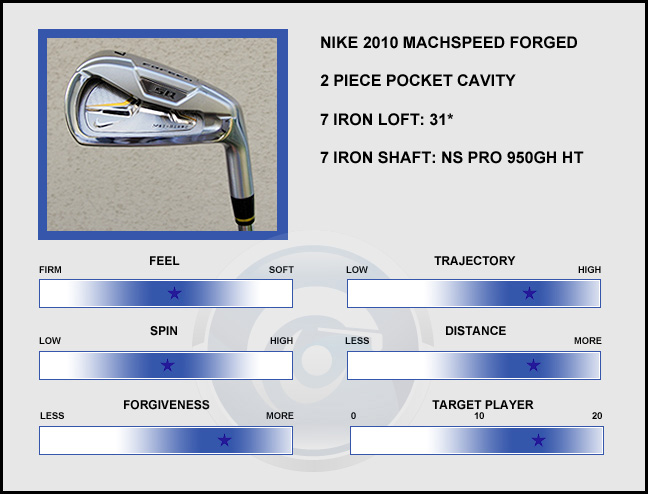
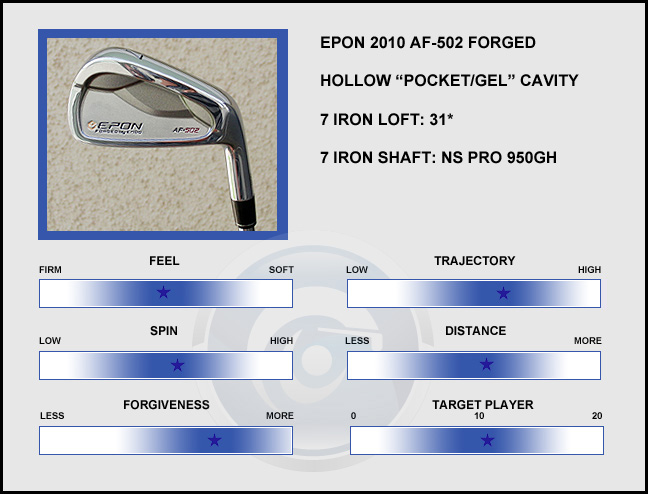
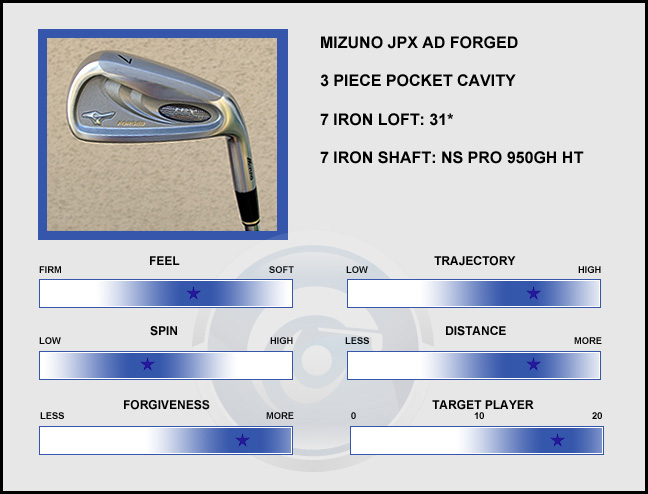
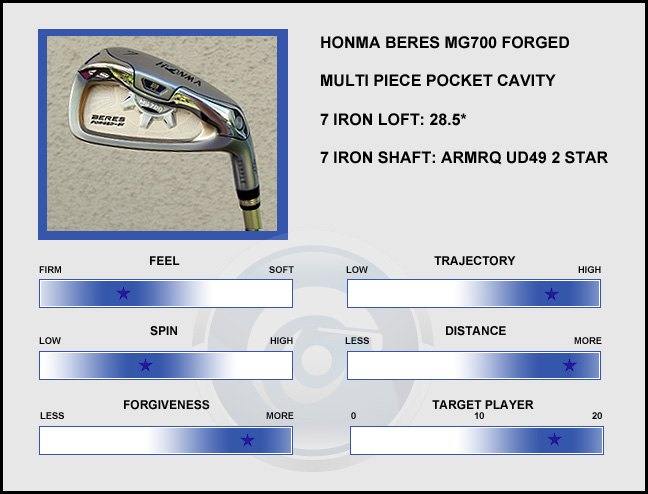
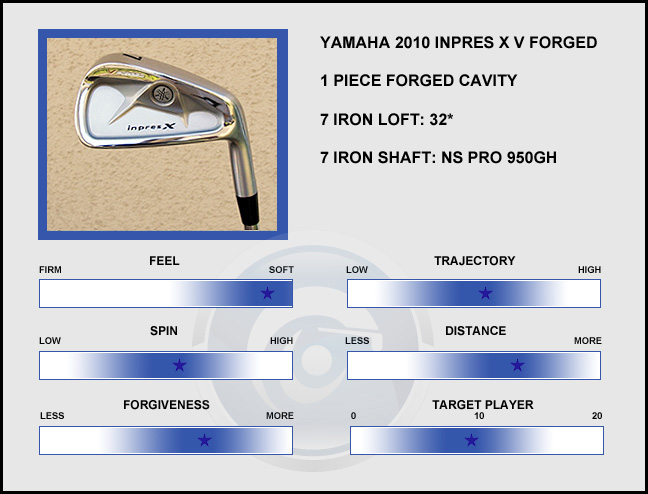
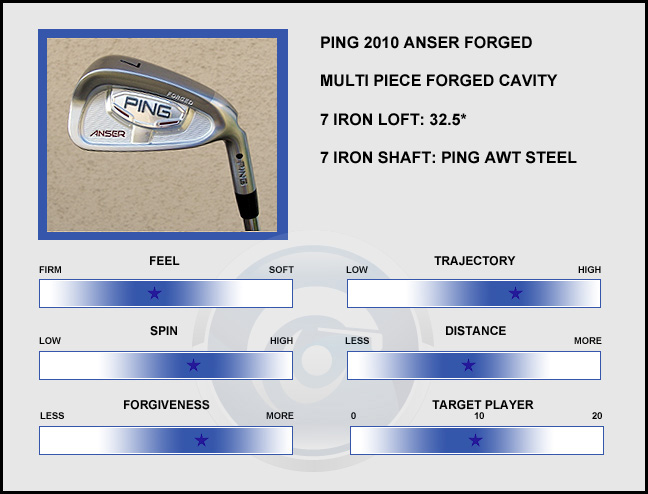
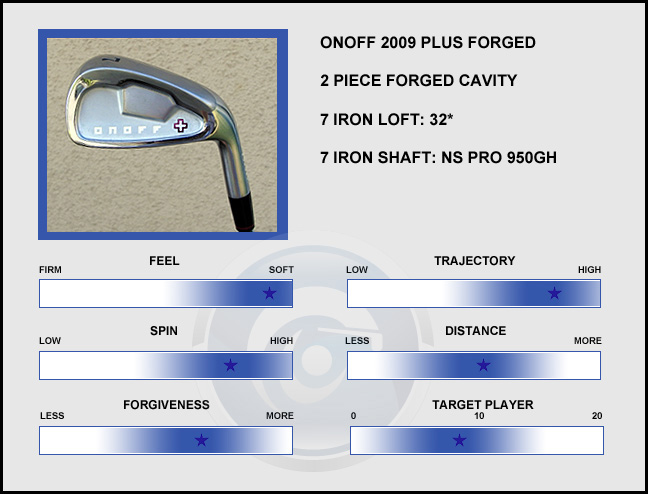



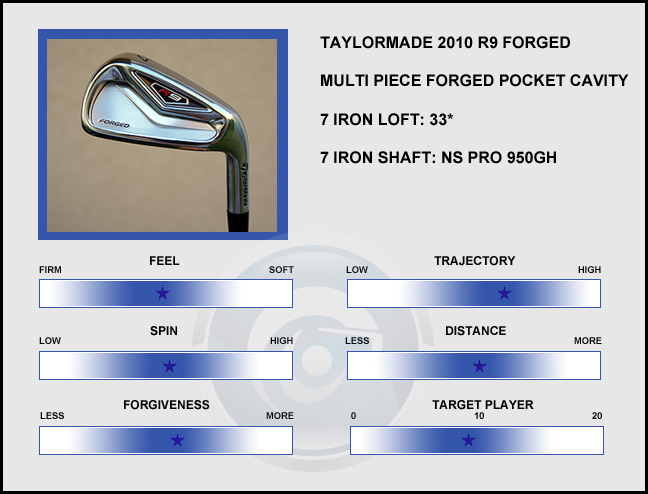

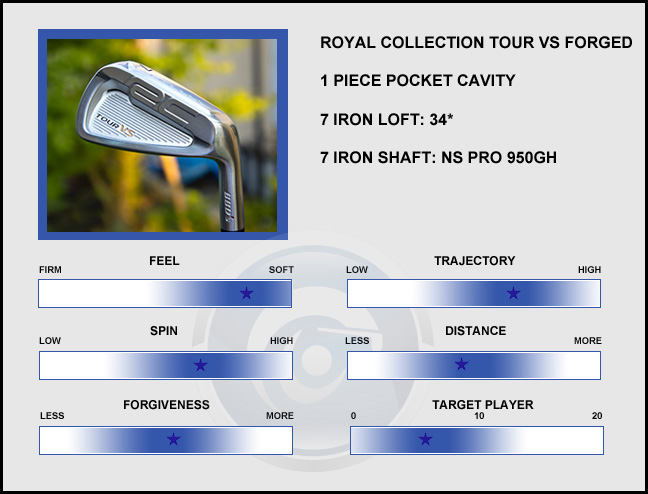

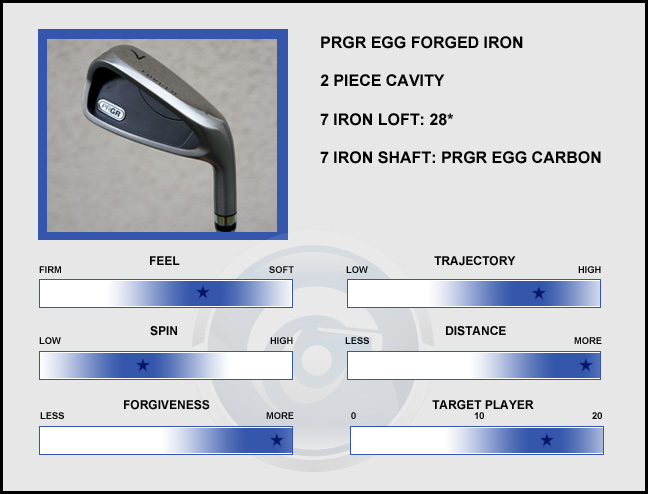










Stellar review T! It’s great reviews like this that help people out when they are deciding to purchase clubs without having to scour all over the web for information about a product.
Thanks for the detailed and informative post. I am a slower swinger and I’d like to play a forged iron but get some distance back. Based on your article I’m leaning towards the egg Forged. Those lofts look very enticing!
FINALY!! I’d been waiting for this report over 5months and couldn’t wait any longer… and placed order for a new set of iron last week!
After reading your report now….what a relief…….cus I bought a set of VG3 with DGS200, and your report of this iron is exactly what I had expected!! Now I wait for the shipping…
Anyway, tremendous job well done. Keep it going!
great job!!!
Great job, I know it was a lot of hard work even for someone who loves to try new things.
Thank you,
AWESOME review. Detailed, thorough, to the point. Very good job.
I thank you for taking the time to do these shootouts and posting. For those of us in the U.S. such demonstrations are vital to our buying decisions as we don’t have clubs available for testing. I cannot imagine that posting such articles doesn’t assist with sales.
To ease the logistics I would suggest enlisting a club pro or instructor to assist with the tests. I also would imagine that some sort of test equipment is available. Possibly in exchange using the equipment, you give them some publicity in the blog?
I certainly don’t understand the Asian market, but I would sugges that Tourspec could become the authority for JDM golf testing for North America, similar to Golf Digest’s Golf Test. Don’t give it up gocchin, grow it!
Thanks for the reviews. I always look forward to visiting your website. If you ever decide to visit TN give me a shout. Would love to treat you to a round of golf here.
hvilletn,
Just curious as I live in Franklin TN. What of TN do you live in?
hendersonville. hence, hvilletn.
Anyone know if the PIng Answer Forged now sold in the US has the same head specs as the ones sold in Japan?